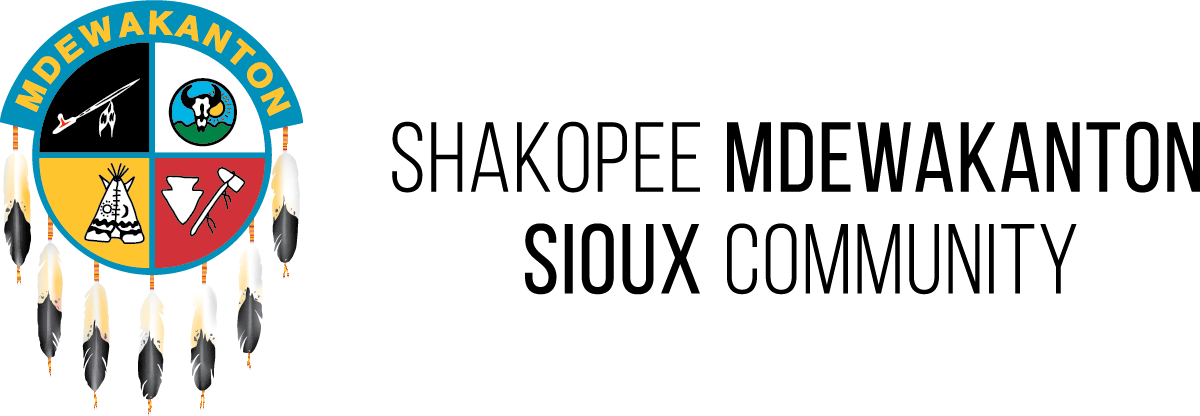SMSC Reintroduces Bison
The Dakota people consider the bison (Pte) a relative, and the tribe went through an extensive planning process to bring bison back to its lands in a sustainable, safe, and ecologically beneficial way.
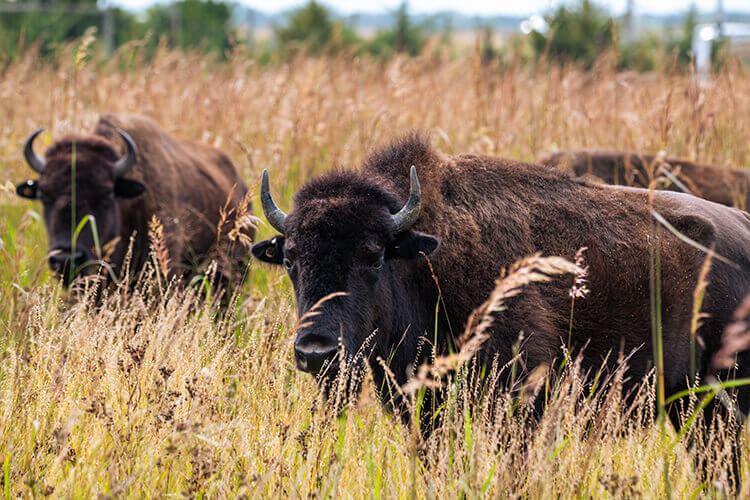
In the fall of 2023, the SMSC welcomed a small herd of bison from the Sisseton Wahpeton Oyate in South Dakota. The herd lives on 165 acres of tribal land southeast of the junction of County Road 83 and Eagle Creek Boulevard in Shakopee.
The SMSC conducted many surveys to better understand how introducing the bison would affect local plants and animals. They found many grassland bird species in the bison prairie, along with many birds migrating through. They also looked at herptile, small mammal, and pollinator populations. Plant and wildlife monitoring will continue to be an ongoing endeavor. Staff anticipate the bison will have a positive influence on the prairie habitat, as they did before they were removed from the landscape.
Historically, the SMSC looked after and had a reciprocal relationship with the natural surroundings, including bison, which the Dakota people depended on for food, medicine, and materials. When colonization occurred, the bison were violently removed from the area and nearly exterminated.
“The story of the bison mirrors the story of Dakota peoples in many ways, and both are resilient,” said former SMSC Chairman Keith Anderson. “Our tribe has restored and revitalized its relationship with our plant relatives over the decades, and we now have the opportunity to revitalize our relationship with our relative, the Pte. Reintroducing bison to our homelands will allow us to bring back traditional ceremonies and food and medicine important to our people.”
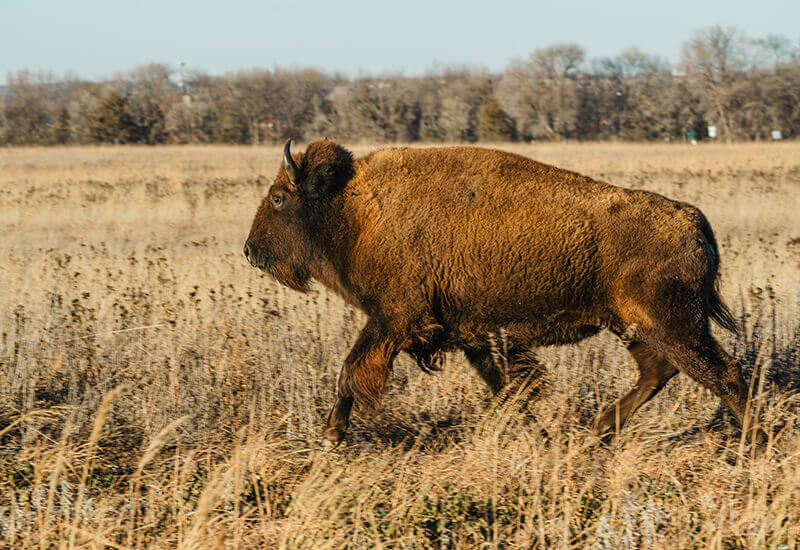
Prairies were once widespread in Scott County and over the past 20 years, the SMSC has worked to restore more than 1,000 acres of prairie on the reservation.
Reintroducing bison to these lands will help the prairie thrive.
FAQs about Pte at the SMSC
In the Dakota language, there are many words associated with bison. For example, ṫ̇aṫ̇aŋka is the general term for the bison species or a male bison. ṫ̇aṫ̇aŋka mdoka specifically refers to a male bison. Ṫamdoka is another term for bull. Pte is a female bison and the general term for cow. Pteżicadaŋ is a calf. An older and more traditional term that refers to the bison is ptéḣcaka.
At the SMSC we refer to our herd as the pteoptaye. Other tribes may have different terms, pronunciations, or use different orthographies.
Initially, the Pte will not be available for viewing while we allow time for them to acclimate to their new environment.
Plans for public learning opportunities have not yet been developed but are under consideration.
Historically, the Dakota people looked after and had a reciprocal relationship with the natural surroundings, including Pte. Dakota people depended on Pte for food, medicine, and materials.
The Pte will stay in the same outdoor enclosure year-round. They do not need to be moved in the winter.
The Pte are a gift from the Sisseton Wahpeton Oyate tribe in South Dakota
White-tailed Deer
The SMSC and researchers from the University of Minnesota collaborated in 2024 to fit GPS radio collars on over 20 deer in the SMSC to monitor their movement and collect health samples. This partnership between the SMSC and the University of Minnesota will help improve knowledge about suburban deer ecology.
Understanding how deer move in the landscape and use different habitats, particularly those near people and major roads is important for natural resources management. Deer in suburban areas provide wildlife watching opportunities and a sustainable protein source via hunting. However, deer are also vulnerable to car collisions, and consume flowers, vegetables, and grain from local gardens and farms, as well as sometimes spreading disease.
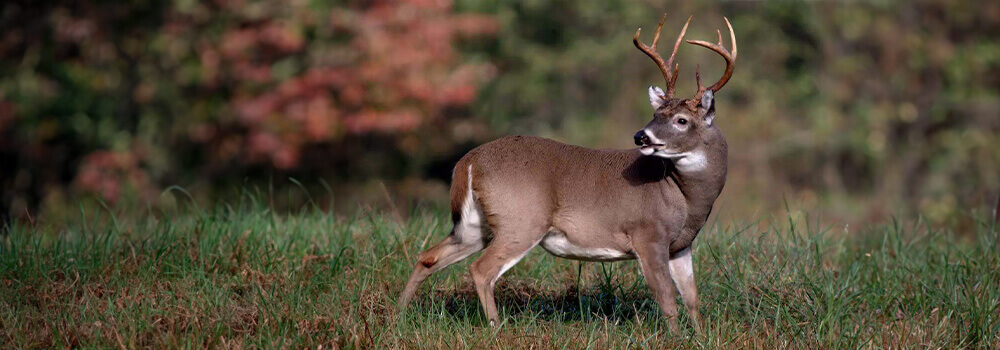
Researchers can use the movement data to identify areas that the deer prefer and areas that might pose greater risk for deer and human safety. When paired with health data, researchers can also get insight into how habitat use might influence the health of the deer population.
Since 2020, the SMSC has collected samples on hunter harvested and roadkill deer to test for chronic wasting disease (CWD). CWD is a fatal, contagious disease that affects cervids, such as deer, moose, and elk. Sampling for CWD helps managers to understand the distribution and prevalence of the disease and can also help us improve response time to help reduce the spread of the disease.
For more information about CWD or for testing for CWD, contact our Natural Resources Department at naturalresources@shakopeedakota.org.
Bird Boxes
The SMSC regularly monitors over 80 bluebird boxes, 20 wood duck boxes and 2 American kestrel boxes. Nesting boxes are important because they provide an alternative to natural cavity nests like holes in old trees.
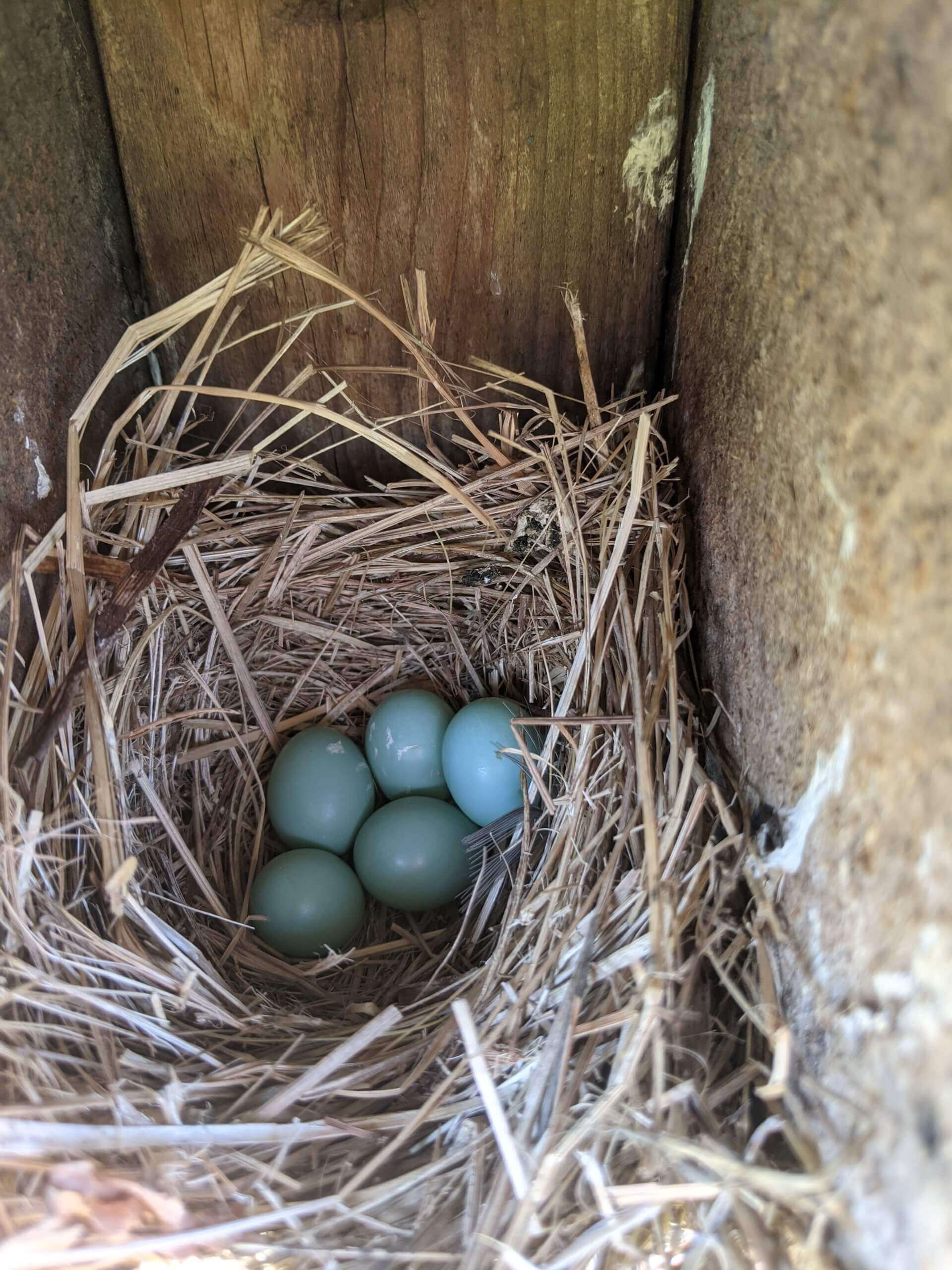
Old trees are often cut down to make way for new tree growth or for commercial development. We have observed many species nesting in our boxes including the American kestrel, hooded merganser, and wood duck. Species observed in our bluebird houses include house wren, tree swallow, black-capped chickadee, house sparrow, and Eastern bluebird. The Natural Resources department staff routinely monitors the boxes to determine how many eggs and chicks are produced per species within a breeding season. This helps inform any improvements, removal, or movement of the boxes. Since 2013, over 3,423 chicks have fledged from the SMSC bluebird boxes.
If you have any questions about the SMSC Bird Boxes, please contact our Natural Resources Department at naturalresources@shakopeedakota.org
Surveys
In the early 2000s, the SMSC conducted a wildlife inventory to document the presence of various species of reptiles, amphibians, birds, and mammals on SMSC lands. Staff documented 147 species total, 105 birds, 29 mammals, seven amphibians, and six reptiles.
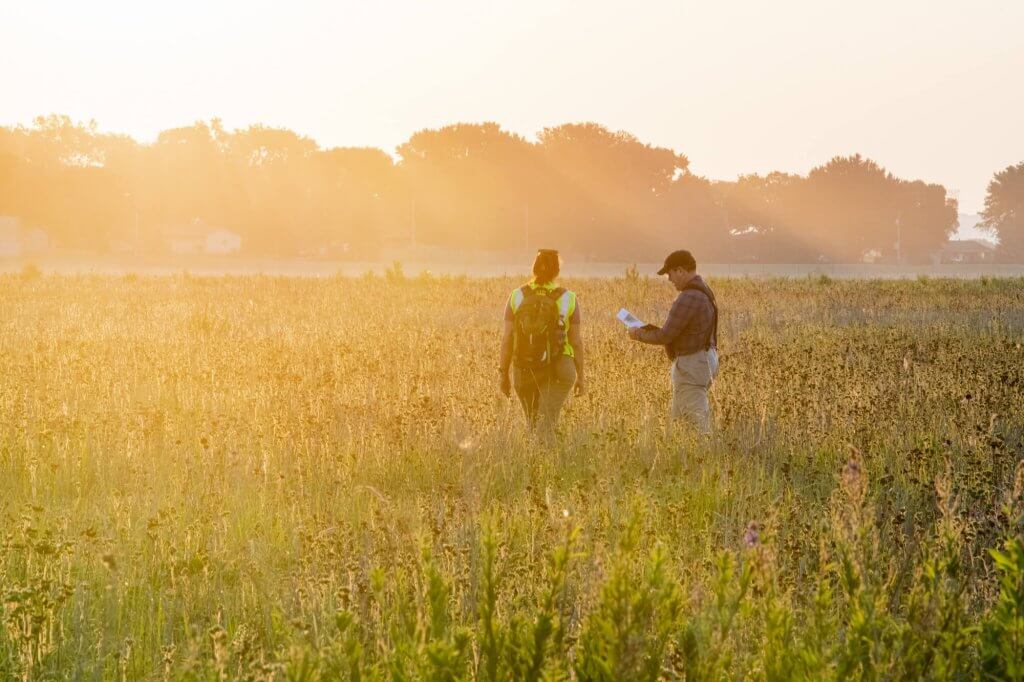
Since then, staff have continued to monitor wildlife with acoustic monitors, camera traps, and field surveys. We’ve recorded over 53 species of birds and 9 species of bats using acoustic monitors including the federally endangered Northern Long Eared Bat. By monitoring wildlife populations, the SMSC can study long-term population trends, ensure that rare, threatened, and endangered species are protected, and help evaluate the effectiveness of stewardship decisions.
To get a detailed report of wildlife surveys, contact the Natural Resources Department at naturalresources@shakopeedakota.org.
